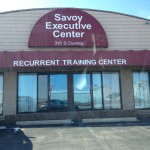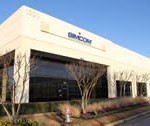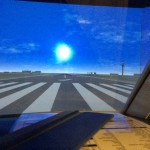Just to rewind slightly – usually I find something to do in a warm place related to aviation in the month of February. That has historically been the point of lowest flying activity for my year as it is usually just too darn cold to futz with pre-flights, pre-heat, and freezing my buns off. Last year I flew to Florida and earned a seaplane rating out of Cherry Pocket. This year – I decided to pay for my own King Air turbine training at RTC Training Center first, in the hopes it would better prepare me for my retirement plan.
At the completion of this training out in Illinois, I had earned a BE-200 initial rating. With that certificate in my hand, the opportunity to take C-90 training and t hen actually fly the King Air came up in the form of a phone call. I came back home for two weeks at work, and then headed down to Florida to train with SIMCOM in the smaller C-90 model. What an amazing turn of events.
hen actually fly the King Air came up in the form of a phone call. I came back home for two weeks at work, and then headed down to Florida to train with SIMCOM in the smaller C-90 model. What an amazing turn of events.
This would be my second self-financed training session, but it is worth it to me for the chance to accelerate my goals. I’m recently 56 years young and healthy, and in good spirits to get this done.
The differences in the training experiences between RTC in Illinois and SIMCOM in Orlando were important. Facilities, documentation, and simulator condition is noticeably b etter at SIMCOM, as is the surrounding location where the training was held.
etter at SIMCOM, as is the surrounding location where the training was held.
Generally, SIMCOM was clean, spacious, in a beautiful area. RTC was old and faded; and the simulators were in working condition but required attention to keep going. The quality of training in both places was entirely comparable, however, and the experience of high quality. Actually – one of the RTC instructors was better than all of them in getting the information into my head and building my confidence.
On Thursday we got signed in and met our instructor. The simulator was available, so we were able to do our entire ground school while sitting in the BE-200 simulator. That helped keep my interest and adrenaline up, and my attention focused. One instructor and three pilots going through all the details I’d already read about.
I’ve had a jump on this class for a bit. My Elite PC-ATD at home has a BE-200 model that I can fly and practice the timing of approaches and so forth. I’ve also had a manual my friend Charlie allowed me to copy from his SIMCOM experience, and I’ve read that cover-to-cover already. Now I have my own. Finally – just before coming down here I was allowed to sit in the C-90 on my own and push buttons, take pictures, and read the manuals. It all helped.
On Friday, I was nervous about finding out if my previous experience would help me fly this airplane – simulator or real. I was also concerned about proving myself to be flexible enough to be a right seat pilot-not-flying kind of guy. That is what I’ll be doing some of the time, so I have new crew procedures to learn. In this case too I have a jump on the training. Mike and I have been dabbling in crew concepts, and I’ve read an awful lot of material that could be applied.
I start out in the right seat and set out to  get my six hour of actually flying this aircraft. We learn start-up procedures, fuel management, hot starts, hung starts, and other abnormal procedures before actually flying. Then it was off to accomplish two initial approaches before we stopped for a break.
get my six hour of actually flying this aircraft. We learn start-up procedures, fuel management, hot starts, hung starts, and other abnormal procedures before actually flying. Then it was off to accomplish two initial approaches before we stopped for a break.
Dan was next, and I assumed pilot-not-flying duties. Radio, gear, navigation, clearances and all of those chores were now mine. The more experienced pilot with us knows what he is doing and that allowed Dan and I to get the full time and attention in the simulator. Both Dan and I switched seats back and forth and became familiar with the airplane. Personally, by the end of the day I felt that my investment in a Twin Comanche PA30 was completely validated by my performance today. My recent experience in the RTC simulator was a bit help as well, as the two machines are very close in procedures and character. I feel pretty good about my ability to fly this aircraft.
On the final day, Saturday, we all wrapped up our requirements and flew the heck out of the simulator in the process. I also had the opportunity, for the first time, to complete a flight with no failures. Every other simulated flight had engine, electrical, pressurization, or some miscellaneous fault occurring at the worst possible time.
Finally – we did all of our paperwork to prove to the insurance company that we’d met our obligations, and then we were cut loose not long after noon. I had tried to move my Frontier Flight back to Saturday night, but no joy. I went back to my room and got ready to go home the next day; and wondered down to a local Chiles for a few celebratory beers. The SIMCOM experience was excellent and kept the fever going.
I enjoyed the entire process, and am now psyched and waiting for my first ride in an actual King Air aircraft.
Fly safe and never stop learning.
Frank
